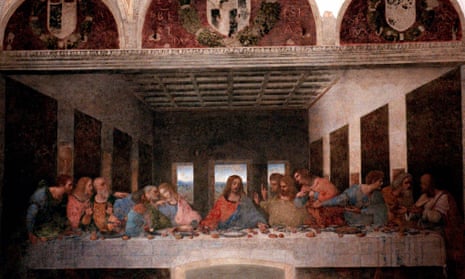This year, in an unusual quirk of the calendar, Passover and Easter overlap, with the Jewish celebrations beginning on the day Christians call Good Friday. Though this is rare, it is unsurprising – not least because the last supper that Jesus ate with his friends the night before he died was a Passover seder. “Do this in remembrance of me,” he told them. Which is how the central act of Christian worship, the eucharist, derives from the Jewish Passover seder. Remember: Jesus wasn’t a Christian. But for the Christians that followed, he was re-described as the lamb sacrificed at Passover. “Christ, our Passover, has been sacrificed for us,” says St Paul, taking his own Jewish theology of temple sacrifice and boldly, even offensively, applying it to a man who was strung up by the Romans as an enemy of the state. The eucharist is probably the most successful mixed metaphor of all time.
One of the major differences between Jewish and Christian practice is that, in Judaism, the liturgical climax of many of the major celebrations takes place in the home and not in the synagogue – that is, not in a specifically religious building. Passover is a family event, a celebration of the escape from Egyptian slavery that is re-enacted in different households, in various diverse ways, often according to family tradition. There is an order to it all, of course. Indeed, seder means order in Hebrew. But because the meal takes place beyond the control of a religious authority, without the need for a rabbi for instance, it can have a vigorous and lively anarchy. So unlike in the liturgy of most formal religious settings, children have a central role – often designing how the evening progresses and asking the questions. Some evenings have more of the feel of a variety show, others can be highly intellectual, with PhDs in politics earnestly debating the philosophy of freedom. You can have LGBT seders, Bob Marley-themed seders (remember Redemption Song), solemn, tearful pious seders. No two feel the same. Yet the same they are, all ordered around the memory of that dramatic escape from persecution.
In contrast, my own church is pathologically nervous of anarchic religious energy. You can see this in the fact that it mostly appoints prefects as bishops, and now women prefects – which might make some sense if there was a superfluity of unbridled chaos, dissent and unrest breaking out from the Church of England pews. But this has not been the case since the 17th century. Now, our problem is one of indifference. And what is needed to revive the church is the stimulation of a much greater sense of religious energy, a task for which our prefects, with their mission plans and spreadsheets, are poorly suited.
For it remains the central task of the church to channel a story of massive emotional power, a story in which the freedom meal of Passover inspires an extraordinary act of non-violent resistance against the brutality of Roman occupation. Into this story is folded a dramatic re-imagining of God not as some alien force hovering above us, but as a human being fully alive, yet prepared to give of his life in the battle against inhumanity and darkness. This story does not want to be trapped in a church.
Of course, the reason the authorities are often nervous of religious anarchy is precisely because of the enormous power that it can evoke, for good and ill. Hence the need for our episcopal prefects to behave as the state’s health and safety officers in matters of religion. The big promise I make to my bishop is that I will only conduct approved services. The seder, by contrast, has no such oversight and is so much more vigorous for it. The nearest I ever got to it was celebrating the eucharist with a group of young people at the Taizé community in France. As a non-catholic I was not allowed to conduct any service in its grounds, so we had a secret service in a wheat field. We kept bread over from breakfast, used Ribena instead of wine, and improvised the whole thing. In that field, the story came alive. The young people never forgot it. Yet I would have been in trouble had I been caught. Go figure.

